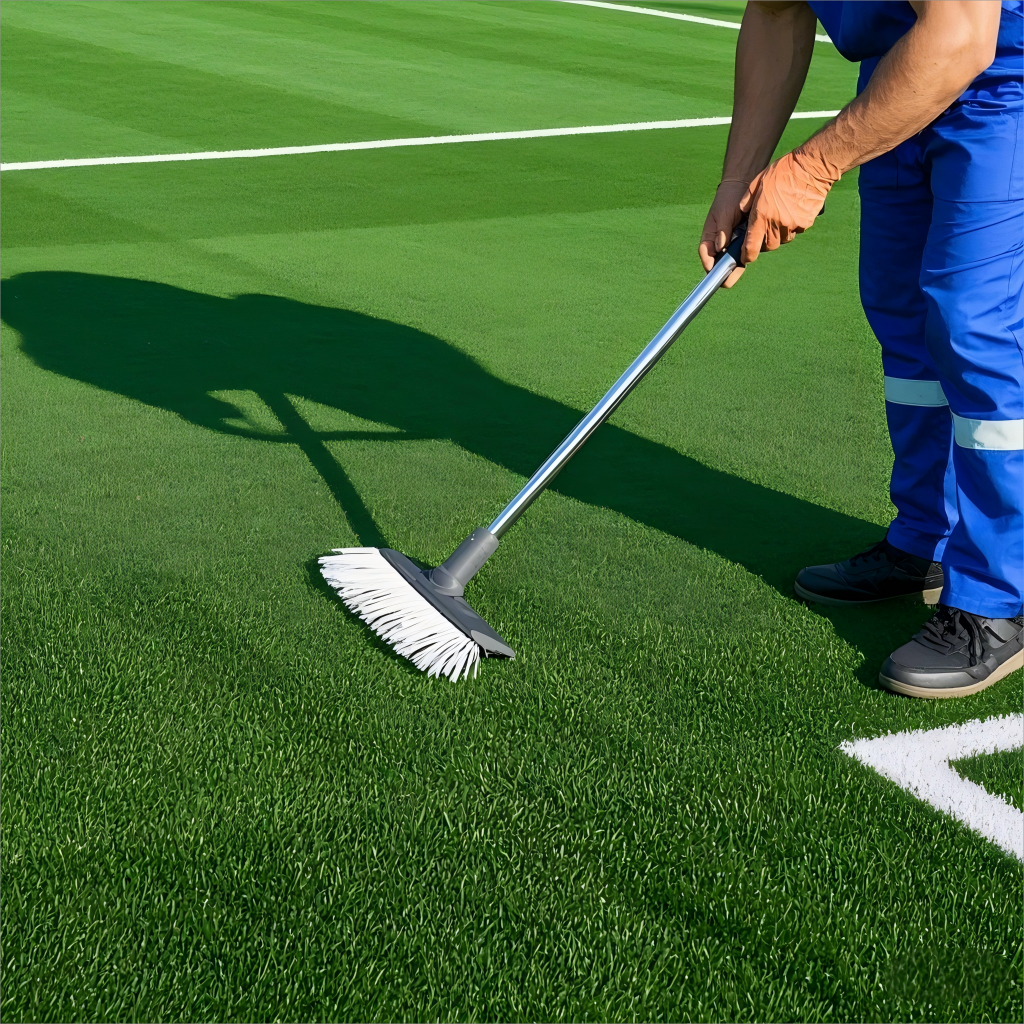News Center
Shandong Zhensure New Materials Technology Industry Co., Ltd.
Cleaning artificial turf requires a combination of daily maintenance and regular deep cleaning to maintain its appearance and function. The following are specific steps and precautions:
1. Daily maintenance
Clean up debris in time
Use a soft brush or vacuum cleaner to remove dust, fallen leaves, pet feces, etc. on the surface.
Avoid using sharp tools to prevent scratching the grass.

Rinse the surface
Rinse with clean water (low-pressure water gun or water pipe) to flush away fine particles and stains.
If there is stagnant water, use a broom to gently push the drainage (pay attention to the unobstructed drainage holes of the 3D hollow structure).
2. Deep cleaning
Washing with mild detergent
Mix a mixed solution of neutral detergent (such as dishwashing liquid) and water.
Dip a soft brush or sponge in the solution and gently brush the contaminated area.
Avoid using chlorine or acidic detergents to prevent fading or aging.
Sterilization and deodorization
Pet urine or food residues need to be treated with diluted white vinegar (1:3 ratio) or professional disinfectant spray.
When the odor is severe, sprinkle a small amount of baking soda and let it stand before cleaning.
3. Special stain treatment
Oil stains/paint: After absorbing with a paper towel, spray alcohol or professional degreaser, and then wipe.
Chewing gum: Use a plastic shovel to remove after freezing to avoid tearing the grass.
Rust: Gently wipe with lemon juice or special rust remover.
4. Precautions
Avoid high-pressure water guns: High-pressure water flow may damage the drainage structure at the bottom of the turf.
Prevent exposure to the sun: Ventilate and dry in time after cleaning to avoid high temperature that accelerates material aging.
Regular inspection: Clean the blocked drainage holes to keep the 3D hollow structure draining smoothly.
The above methods can not only keep the artificial turf clean and beautiful, but also extend its service life.
If the pollution is serious or the area is large, it is recommended to contact a professional cleaning service.
This article will provide you with a detailed introduction to the core advantages of wood-plastic products from three aspects: environmental performance, durability and maintenance, and application fields.
It is highly cost-effective and has a wide range of application scenarios. From commercial Spaces to home decoration and even special environments, it can be perfectly integrated, becoming an innovative solution for the fusion of modern architecture and urban ecology.
It overcomes the shortcomings of traditional plant walls, such as cumbersome maintenance and limited environmental conditions. With advantages like zero maintenance, high weather resistance, and full-scenario adaptability, it has become an ideal decoration solution for commercial Spaces, home designs, and special environments, redefining the way humans interact with nature.
1. Environmentally friendly and durable, with an extremely long service life 2. Quick installation, saving time and effort 3. Zero maintenance cost, saving you both time and money 4. Safe and anti-slip, suitable for multiple scenarios
Wood-plastic Composite (WPC) is an innovative material that combines natural Wood fibers with thermoplastic plastics, featuring both the warm texture of wood and the durability of Plastic. With the enhancement of environmental awareness, the application of wood-plastic composites in the fields of construction and home furnishing is becoming increasingly widespread. Its waterproof, moisture-proof and moth-proof properties make it an ideal choice for outdoor flooring, fences, flower boxes and other scenarios. The rich colors and textures also make wood-plastic products shine brightly in indoor furniture and wall decoration. This article will take you into the diverse application scenarios of wood-plastic composites and explore how they infuse different Spaces with dual values of nature and practicality.